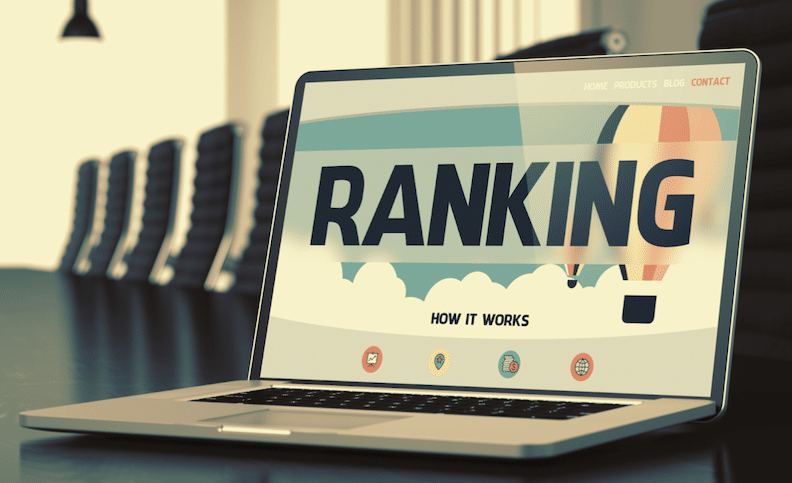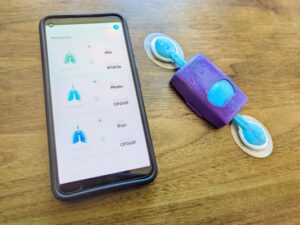Are you struggling to reach customers online? You’re not alone. About 60% of marketers are trying to improve their organic presence this year.
With a strong search engine optimization (SEO) strategy, you can reach the top of a search page. The higher you rank, the more often people will see your business. Your brand awareness and recognition will increase as a result.
Meanwhile, you can attract more people to your website! Then, you can convert those visitors into leads and sales.
In order to boost your SEO ranking, you’ll need to consider the current SEO ranking factors first. Google’s algorithm changes throughout the year. Keeping up with the SEO top ranking factors can improve your optimization strategy.
You can improve your website, content, and link-building plans to give your SEO ranking a boost.
Sound like a plan? Keep these 10 Google SEO ranking factors in mind and start optimizing!
1. Core Web Vitals
Google Core Web Vitals were introduced in 2020. These core web vitals are user-centered ranking factors. Adhering to these web vitals will help improve the user experience on your website.
Google prioritizes the consumer’s ease and convenience. Improving the user experience on your site will provide them with that ease. Different aspects of the user experience include interactivity, stability, and loading.
There are three factors you’ll need to consider.
The first is Largest Contentful Paint (LCP). LCP considers the loading performance. It measures how quickly the largest element on your page loads.
Elements can include images, videos, or plain text.
If the largest element on your website lags, visitors will have to wait around. You could frustrate your website visitors if they have to wait too long.
To improve your LCP score:
- Choose better hosting
- Leverage page caching
- Optimize your images
- Minify your CSS and Javascript codes
- Use a content delivery network
The second factor is First Input Delay (FID).
FID measures your site’s interactivity based on user inputs. For example, what happens when visitors perform keypresses or mouse clicks? How long does it take for the browser to react?
The faster the reaction time, the more responsive your pages are.
To optimize FID:
- Minify and compress your Javascript files
- Delete unwanted Javascript files or code
- Split up long Javascript tasks
- Eliminate unnecessary third-party scripts like themes and plugins
- Enable browser caching
The third factor is Cumulative Layout Shift (CLS). CLS assesses how elements move around the page as its loading. CLS considers visual stability.
To reduce CLS:
- Preload custom web fonts
- Limit your embedded content and iframes
- Set fixed dimensions on all images
You can use PageSpeed Insights and Google Search Console to gather reports regarding these factors.
2. High-Quality Content
Google looks for unique, fresh, high-quality content when determining SEO rankings. You want to make sure your content is valuable to the reader. Otherwise, they have no need for it.
Utilize keyword research to learn more about your target audience. What problems and concerns do they have? How can your content answer those concerns?
Go the extra mile for your customers. Write all-inclusive articles that respond to their needs and questions.
Keep updating your old content with new information as well.
3. Keyword Placement
Keyword placement is an important ranking factor to consider, too.
The title tag has the largest impact among your meta tags. Google bots use the meta title tag to understand the context of your page.
Create a descriptive, unique title for your meta tags. Make sure to include your target keyword.
You’ll also need to add your keyword to the URL, header tags, and meta descriptions. Add it to the image alt text as well. Make sure the image alt text is relevant to the photo.
Don’t overuse your keywords. Avoid keyword stuffing by making sure your content reads naturally.
4. High-Authority Backlinks and Internal Links
Backlinks and internal links have been important SEO ranking factors since the beginning. Build a strong link-building strategy to boost your website’s domain authority.
Backlinks help you leverage someone else’s existing authority. Gathering backlinks from other sites will show Google you’re a credible resource, too. As you gain more backlinks, you can get ahead of competitors in your industry.
Make sure to prioritize high-quality backlinks from credible resources. These links will tell Google people already trust your content.
Make sure to use white hat SEO practices. For example, you shouldn’t exchange links with someone or buy links.
Instead, create high-quality content people want to link to. Look at websites that are already linking to your competitors. Then, search for broken links.
Create content to replace those broken links. Then, encourage the site with the broken link to share your content instead.
Don’t forget internal links as well. Internal links send visitors on your site to other pages on your site. Adding internal links to your content can boost dwell times and clickthrough rates.
Improve the navigation on your website as well. Make sure the navigation is organized and the text is easy to read. Improving your navigation can encourage people to continue exploring your content.
Internal linking helps Google gain a better understanding of your site hierarchy, too. It will better recognize how your pages connect.
5. Relevancy
As you start creating more content for your SEO strategy, consider EAT.
EAT stands for expertise, authority, and trust.
Start by including author names and biographies for your editorial content. Show Google authoritative, trusted experts are creating content for your website. You can start boosting your online credibility by demonstrating your expertise.
Invest in your personal branding, too. Find ways to boost your thought leadership strategy. Tell your story, connect with influencers, and share content on trusted platforms.
Make sure to back up any claims you make with research. Link to high-authority websites, studies, and data. Show readers you’re well-informed and not making outlandish claims.
Don’t forget to add social proof on your website. Add customer reviews regularly.
Keep your content up-to-date. You don’t want to share outdated facts or studies on your site. Regularly check the facts to ensure people can trust your content.
Develop an EAT strategy to support your SEO ranking.
6. Visitor Dwell Time
Remember, Google looks at how long people stay on your site. Improving your visitor dwell times can boost your SEO rankings.
The time-on-site indicates the average time someone spends on a particular page. To improve their dwell time:
- Create high-quality content that appeals to the user’s search intent
- Hook readers with engaging headlines and opening paragraphs
- Use a simple page layout
- Utilize white space to give your content room to breathe
- Improve your readability with short sentences and paragraphs
Add visuals and videos to engage your website visitors, too. Consider working with an experienced SEO consultant like Sonder to get started.
7. Mobile Optimization
Google now uses mobile-first indexing to determine SEO rankings. If your website isn’t optimized for smaller screens, you’re neglecting part of your audience.
In fact, people interact with twice as many brands on mobile devices, compared to desktop. Mobile conversions are 64% higher than desktop, too.
Unfortunately, almost 40% of people will stop engaging with an unappealing website. Another 70% of online users abandon shopping carts due to poor web design.
People use their phones while in your store, too. In fact, about 40% of consumers compare prices on mobile while at a store.
If your website isn’t mobile-optimized, consumers will leave without clicking around. Your bounce rate will increase as a result. Meanwhile, your dwell time and clickthrough rate will drop.
Google uses these metrics when reviewing your SEO ranking factors. You need a low bounce rate and high visitor engagement.
Make sure your website is mobile-optimized and easy to use on smaller screens. Work with an experienced website designer and developer. They’ll make sure your website appeals to all audiences.
You can use Google’s Mobile-Friendly Test to determine whether or not your website is optimized.
8. Page Load Times
Enter your website into Google’s PageSpeed Insights tool. Is something slowing your website down? A one-second delay in load times could impact mobile conversions by up to 20%.
About 75% of smartphone owners turn to search to address immediate needs. They don’t want to wait around for answers. Instead, they expect quick, easy access to your website.
If your website lags, people could leave without clicking around. Remember, you need high clickthrough rates and dwell times. Otherwise, a high bounce rate can hurt your SEO ranking.
Look for reasons your pages are lagging behind and start speeding things up!
9. Security
Remember, Google wants to provide users with the best possible experience. It doesn’t want to send users to a site where they might get hacked. To protect its users, Google prioritizes websites that prioritize security.
Make sure your website has an SSL certificate. SSL certificates are free and easy to install. You can protect your customers and your SEO ranking.
10. Schema Markup
You can add code to your website to make your content easier for Google to read and understand. A schema markup can also help you appear in featured snippets on search pages.
For example, your content can appear as a list, summary, recipe, or video.
Look for ways to structure your site content with schemas in mind.
Boost Your Page: 10 Essential SEO Ranking Factors for Success in 2021
Don’t let your competitors rank ahead of you this year. Instead, consider these 10 essential ranking factors. By prioritizing these Google ranking factors, you can boost your SEO ranking in 2021.
Then, you can reach more customers and boost your business, too.
Searching for more useful tips and tricks? We can help.
Explore our latest guides today to get started.










